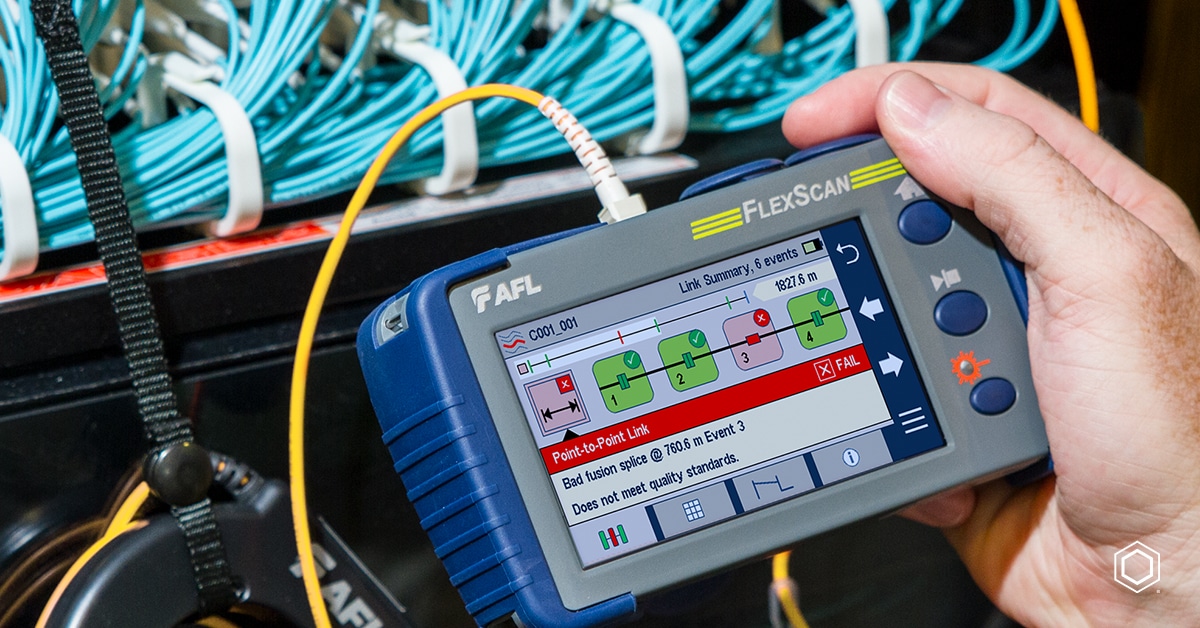The use of ofda enhances fibre evaluation with innovative optical technology.
The use of ofda enhances fibre evaluation with innovative optical technology.
Blog Article
Discovering the Conveniences of Optical Fiber Evaluating for Enhanced Interaction Solutions
The importance of optical fiber screening in contemporary interaction systems can not be overemphasized, as it serves as a foundation for guaranteeing network reliability and efficiency. Using advanced techniques such as Optical Time-Domain Reflectometry (OTDR) and insertion loss analysis, organizations can not just determine faults however also optimize their configurations. This proactive screening method has profound effects for signal high quality and operational performance, increasing the question of just how these practices add to long-lasting sustainability in an ever-evolving technical landscape. Comprehending these dynamics is essential for stakeholders intending to keep an affordable side.
Significance of Optical Fiber Testing
The importance of optical fiber screening can not be overemphasized in today's data-driven atmosphere. As companies increasingly rely upon high-speed data transmission for daily procedures, the integrity and efficiency of optical fibre networks are critical. Examining makes sure that these networks can support the huge quantities of data created and transmitted effortlessly, fostering effective interaction and connection.
Optical fibre screening serves numerous important functions, including confirming installation high quality, identifying possible faults, and determining general system performance. Normal screening can stop pricey downtimes and service disturbances, allowing companies to maintain operational connection. It aids in compliance with industry standards and regulations, ensuring that fibre optic installations meet required specifications for safety and reliability.
Furthermore, testing can improve the durability of fibre optic systems. By proactively identifying issues such as signal loss, attenuation, or adapter failings, organizations can address problems before they intensify, therefore extending the life of their facilities. In recap, optical fibre testing is not merely a technological demand but a strategic financial investment that enhances network integrity, enhances efficiency, and eventually sustains the growth and performance of contemporary interaction systems.
Secret Examining Approaches

OTDR is an essential technique made use of to identify faults, action splice losses, and assess the general stability of a fiber optic link. By sending out a pulse of light down the fiber and evaluating the mirrored light, specialists can determine locations of faults and examine the network's efficiency over fars away.
Insertion loss testing measures the amount of signal loss that takes place when light go through a connection or splice. This technique is critical for confirming that connections satisfy given loss thresholds, which is necessary for keeping optimal performance in communication systems.
Optical return loss screening measures the quantity of light mirrored back in the direction of the source due to flaws in the fiber or links. High return loss values suggest far better performance and minimized signal destruction.
With each other, these testing techniques give a detailed evaluation of fibre optic networks, ensuring their integrity and capability in diverse communication visit our website applications.
Influence On System Efficiency
Reliable optical fiber testing directly influences the general efficiency of interaction systems. By making certain the honesty of fibre optic wires, screening recognizes prospective mistakes such as attenuation, splice loss, and adapter misalignment. These concerns can considerably deteriorate signal high quality, causing disruptions and lowered information transmission speeds.

Furthermore, normal optical fibre screening adds to long-lasting system sustainability. It enables very early discovery of wear and tear, permitting timely upkeep and upgrades before major failures happen. This not only lengthens the lifespan of the framework however also makes sure that communication systems continue to be competitive in regards to performance.
Cost-Effectiveness and Performance
Cost-effectiveness is a critical consideration in the release and upkeep of optical fiber networks. Executing durable optical fiber screening treatments can dramatically minimize functional costs by recognizing discover this problems prior to they rise into major issues. robotic vision. By identifying faults, attenuation, and other efficiency barriers early, organizations can prevent expensive repair services and downtime, which can disrupt services and result in profits loss
Moreover, reliable screening methods improve the setup process, enabling technicians to function better. This converts to lower work expenses and faster job completion times. Advanced testing devices, such as Optical Time Domain Name Reflectometers (OTDRs), enables an accurate analysis of fibre high quality, ensuring that just optimal products are utilized, therefore lessening waste.
Normal testing additionally adds to much better resource allocation. By comprehending the network's performance, organizations can make informed choices about upgrades and developments, making sure that investments are made where they are most needed. In recap, optical fiber screening improves cost-effectiveness and efficiency, sustaining the lasting sustainability and competitiveness of interaction systems in an increasingly requiring market.
Ensuring Long-Term Dependability
Applying extensive optical fiber screening not only improves price savings and operational performance but likewise plays a crucial role in making sure the lasting reliability of Continued communication networks. Constant screening practices, including depletion and transmission capacity assessments, assistance determine possible degradation in fibre efficiency prior to it leads to service interruptions.
By utilizing advanced testing methods, network drivers can pinpoint faults or weaknesses in the fibre facilities, permitting prompt remediation. This positive technique decreases downtime, ensuring that communication systems remain practical and effective. Moreover, normal testing adds to the advancement of a much more resilient network, as operators can adapt and enhance their facilities based upon real-time information understandings. robotic vision.
Additionally, ensuring compliance with market standards through optical fibre screening enhances the top quality and honesty of the whole communication system. This adherence not just strengthens self-confidence amongst stakeholders but additionally straightens with governing needs, which are increasingly rigorous.
Verdict
In conclusion, optical fiber testing offers as a fundamental part in improving interaction systems. By employing numerous testing techniques, such as OTDR and insertion loss analyses, networks can accomplish optimum performance and dependability.
Report this page